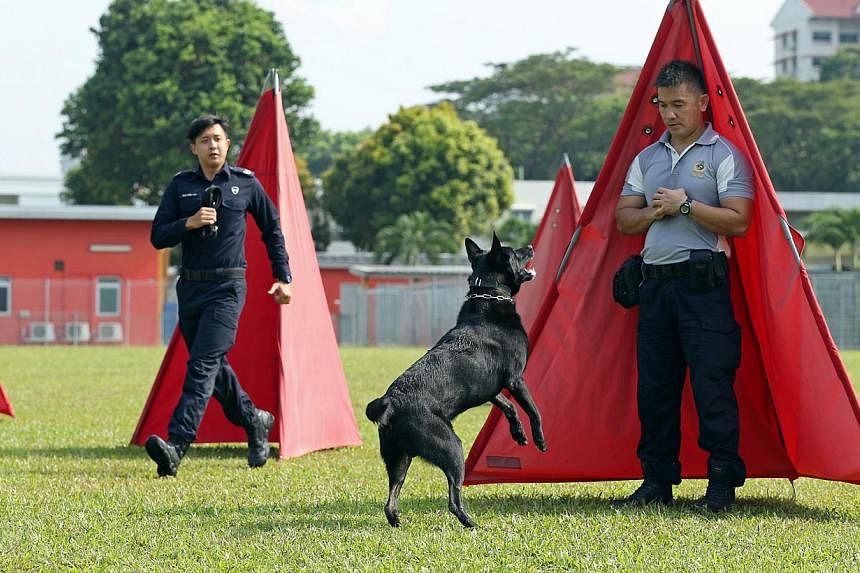Dogs are playing a bigger role in fighting crime here. The Singapore Police Force's K-9 Unit had a paw in cracking 222 cases last year, double the number in 2011.
The unit's commanding officer, Superintendent Koh Lye Meng, attributed the rise to "a better understanding" of what police dogs can do, through talks and presentations given to the rest of the force and other Home Team agencies.
This better appreciation of the dogs' capabilities means that the dogs, which are on standby 24 hours a day, will be activated more quickly.
"The faster you activate the K-9 Unit, the better the chances of detection (of criminal evidence). Time is a crucial factor," said the 43-year-old, who has led the unit, which comes under the Special Operations Command (SOC), since 2009.
The dogs are trained to detect drugs and explosives, as well as pick out traces of blood, and bodies in various stages of decomposition. Dogs excel at this because they have more than 220 million olfactory sensory cells, 44 times more than humans.
And in last December's Little India riot, two dogs were at the scene to help in crowd control. Seven others joined in later and assisted troopers with mop-up patrols.
Dogs were first used in police work here in 1911, when an airedale terrier was used by the British colonial police to track down escaped prisoners. But it died the following year, and it was not until 1955 that dogs - four german shepherds - were used again for police patrol and tracking.
In 2002, the K-9 Unit relocated to its current 2.8ha home in Mowbray Road off Choa Chu Kang.
There are 242 dogs there now.
German shepherds and belgian shepherds, or malinois, are typically used as general-purpose dogs, trained to attack and track down potential criminals, detect bodies and in crowd control, among other uses.
Labrador retrievers and springer spaniels, on the other hand, are used as narcotics or explosive-detector dogs.
The biggest misconception people have is that the police dogs are fed drugs in order to sniff out illegal substances, said Supt Koh.
Instead, officers use a "reward system". Dogs are taught to associate specific scents with rewards such as tennis balls. It takes about 12 weeks to train them before they can be deployed.
The bigger challenge is finding the right person to do the job, who has to learn to not get too close to his animal charge. Each dog is paired with a handler.
Supt Koh said: "Our dogs are working partners, not pets. I always emphasise to my officers not to overly pamper them."
Handlers go through eight to 12 weeks of training, and get re-certified every year.
Lucky dogs get to spend their retirement years in comfort.
Senior Staff Sergeant Elaine See Toh, 35, who has been in the unit for 14 years, adopted two english springer spaniels named Peace and Storm after they retired when they were seven years old. Having worked with them for many years, they were "just like family members", she said.
"Dogs are the best working partners anyone can ever get. They give their love unconditionally, never judge and are always loyal," she added.


